15 Interesting Facts about Franklin Roosevelt
Franklin Delano Roosevelt, the 32nd President of the United States of
America, was born on January 30, 1882. Also known as FDR, Roosevelt brought the
U.S. out of the Great Depression and led the nation through World War II. His
New Deal plans created jobs for the unemployed, allowed for labor unions to
prosper, reformed the country through regulating Wall Street and the national
banking system, and
helped bring about sustainable economic growth. Some of his plans, like social
security and the Federal Deposit Insurance Corporation, are still very important today. Although he tried
to keep America neutral during World War II while also supporting the Allies, FDR led America into
war directly following the attacks on Pearl Harbor. His leadership provided an
overall war strategy that was able to eventually destroy the Nazis and the Axis
Powers. Many historians point to the entry of the U.S. into the war as a turning point, and FDR was not a president
known for not taking action. He worked with the
military and ensured a victory.
FDR Signing Declaration of War Against Japan
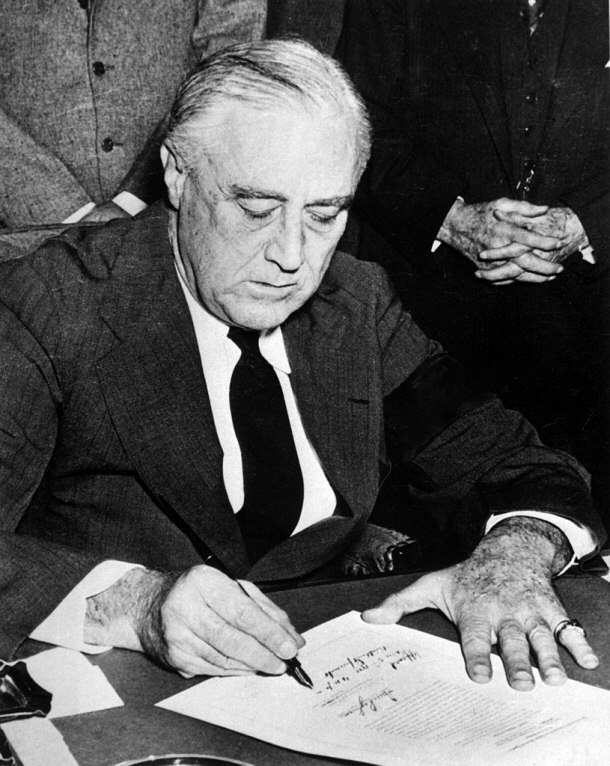
However great some of his ideas were, not all of his programs were
altruistically good like the Manhattan Project or the Japanese internment camps.
The atomic bombs created by the Manhattan Project devastated Japan and made the
U.S. the atomic weapon powerhouse that it is today. There are still talks for
nuclear disarmament, with the threat of nuclear war and the utter devastation it
could possibly bring if there was any disagreement between nations. The Japanese
internment camps are a major black mark on American history. While not as bad as
the Nazi's concentration camps, the interment camps still point to how a country
and its leadership chose to wrong an entire race during wartime. Despite a few dark
chapters of his presidency, overall FDR is remembered as a good president whose
influence can still be felt in today's society. Although much is remembered about his
presidency, not everyone remembers facts about the man himself, other than that
he had polio. This great American president was also an interesting man, as
these fifteen facts will illustrate.
15) Only President to Serve Four Terms
There have been well-liked presidents during America's history, but FDR is
the only president to be elected to four terms. He served as President for an
unprecedented twelve years, dying during his fourth term before victory was
secured in Japan. Not many presidents
tried to seek out more than two terms before FDR. George Washington famously
declined a third term, and many attribute this to creating a trend of two term
presidencies. Ulysses S. Grant did attempt a third, but lost his party's
nomination. After FDR served four terms, an amendment was proposed and
subsequently ratified, that set a limit to the presidency at two terms. People
felt that having a president serve so many terms could lead to political
corruption, with too
much power given to one person for too long. There have been a few attempts to
repeal this amendment, but none of them have been successful. It is foreseeable
that FDR will remain the only president to serve more than two terms as the
President of the United States.
FDR Memorial in Washington, D.C.
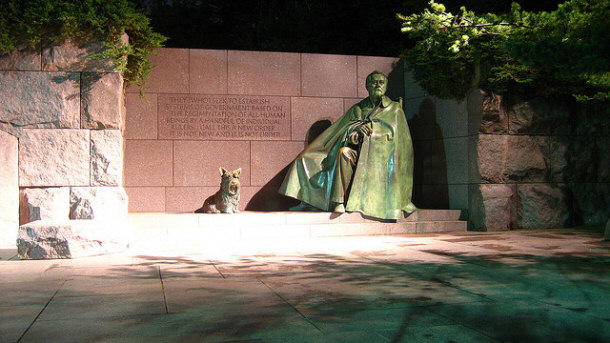
14) Fifth Cousin of President Theodore Roosevelt
FDR was not the only Roosevelt to be president. Theodore Roosevelt, FDR's
fifth cousin, was the 26th President of the United States. FDR and Teddy
Roosevelt had the same great-great-great-great-grandfather Nicholas Roosevelt,
who lived from 1658 to 1742. Teddy Roosevelt was the youngest president ever to
serve at just 42 years of age.
26th President of the U.S. Theodore Roosevelt
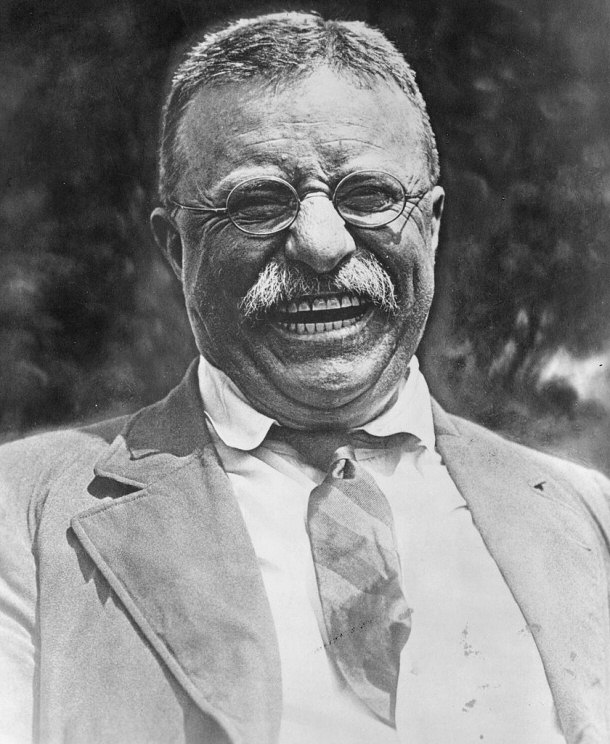
He is remembered for his love of the outdoors and adventure, his membership
with the infamous Rough Riders, his leadership of the Progressive Movement, and
the Teddy Bear. The two cousins knew each other, and Teddy actually walked FDR's
wife Eleanor down the aisle at their wedding. FDR came from a very privileged
family and had many relatives in politics and other influential places. FDR
enjoyed tracing his genealogy and researching his family's ancestry. He claimed to be related to eleven Presidents of
the United States, along with other famous people like Robert E. Lee, Jefferson
Davis, Queen Elizabeth, and Winston S. Churchill.
FDR and Churchill in Casablanca
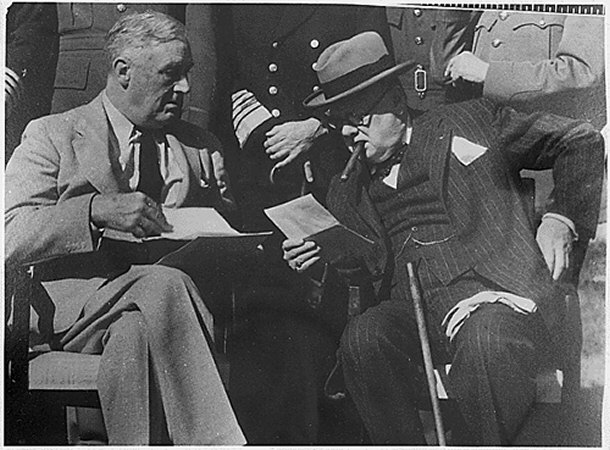
If these assertions are true, then maybe his leadership abilities were in his
bloodline.
13) Related to his own Wife
Not only was FDR related to Teddy Roosevelt and other famous people, he was also
related to his own wife. Although not close blood to FDR, Eleanor Roosevelt was
Theodore Roosevelt's niece through his brother. This makes FDR and Eleanor
distant cousins. The reason Teddy Roosevelt walked Eleanor down the aisle at
their 1905 wedding was because her father was dead, and as her uncle, he felt he
should take on the responsibility. Eleanor Roosevelt was a smart and
well-educated woman for her time. She
attended Allenswood, a prestigious preparatory school for women in England.
Eleanor and Franklin with Children Anna and James
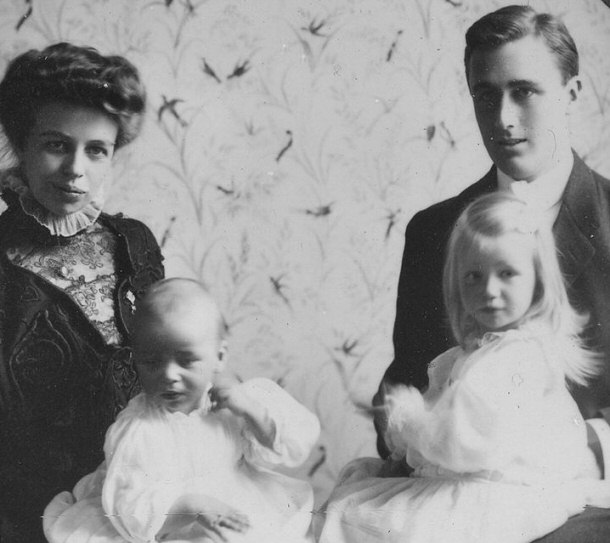
Eleanor influenced many of the New Deal policies, and she worked hard to aid in
the reformations that were necessary during The Depression. She never looked to
run for public office, but Harry Truman allegedly said he would not have minded
her running as his vice president. She wrote an article "My Day”, that was a
public diary she used as a pedagogical device, a political tool, and a way to
communicate her ideals to the public. She and FDR's marriage was not entirely
happy, and she lived apart from him for much of it, although remaining a powerful political partner.
12) Home Schooled until age 14
FDR, although a good president, was never a successful student. He was taught at
the family estate which was called Springwood until age 14.
Springwood - Roosevelt Family Estate
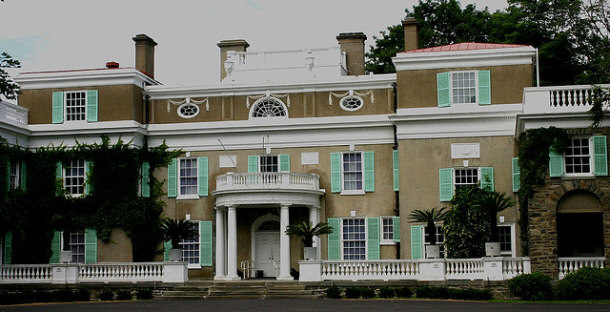
At this point, he was
sent to preparatory school at Groton, and later attended Harvard. Groton was a
preparatory school for wealthy families.
FDR at Groton in 1900
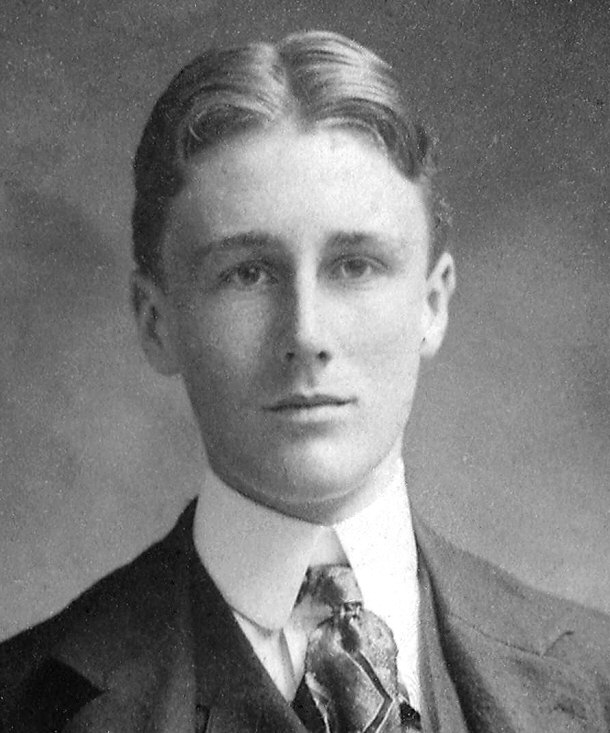
He got average grades throughout school and even during law school. He graduated Harvard with an A.B.
in history, although he did later receive an honorary LL.D. He attended Columbia
Law School but after he passed the bar, he dropped out. Columbia awarded him a
posthumous J.D. Without a law degree, he attempted to begin his career as a
lawyer until deciding to enter public office. Like many successful people, his
early schooling was not a true indicator of what he would be able to accomplish
later in life. In spite of all the great success he attained as a powerful
leader, he did not have a very strong formal education. In today's
society, it would be very difficult to become president without a strong
education, and especially without a strong legal background. Luckily for FDR,
what he did not learn in school, he was able to learn from life experience. He made very smart and educated decisions throughout his presidential
career.
11) Ran Unsuccessfully as Vice President in 1920
FDR's run as president was not the first time his name was on the presidential
ballot. Roosevelt had a promising young career in politics, serving as a state
senator and Assistant Secretary of the Navy.
1920 Presidential Election Poster
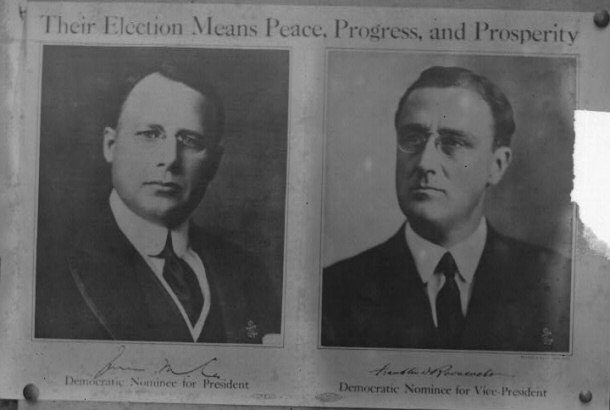
In 1920, he ran on the democratic ticket when Ohio Governor James Cox ran for
the Presidency. However, they lost to Warren G.
Harding and Calvin Coolidge.
Roosevelt and Cox During 1920 Presidential Campaign
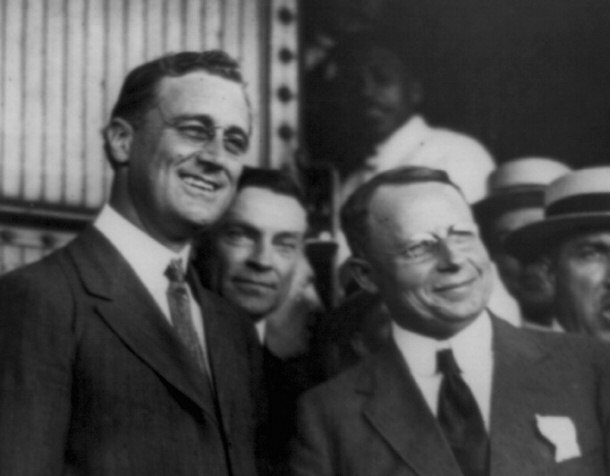
This did not deter FDR from continuing to peruse a life in
public office, even after he became ill following his loss during the 1920 election to
Harding and Coolidge. He served two terms as the Governor of New York State in
1928 and 1930, before ultimately becoming President in 1933.
10) First Democrat in his Family
Although FDR came from a long line of politicians, he was the first in his
family to be a Democrat. Prior to FDR, most Roosevelts including Theodore, were
Republicans. In fact, FDR's decision to be a Democrat helped him begin his
political career. When he first ran on the Democrat ballot for the New York
State Senate, he was chosen mostly because of his family name. Only one democrat had
been elected in Dutchess County, the area he was trying to represent, since 1856. At
this time, many people still remembered Theodore Roosevelt and held him in great esteem.
Therefore, the Democratic Party in the area decided that, with esteem for
Theodore still so strong, the people may just decide to elect a Democrat again
if that Democrat had the Roosevelt name.
Roosevelt in 1913
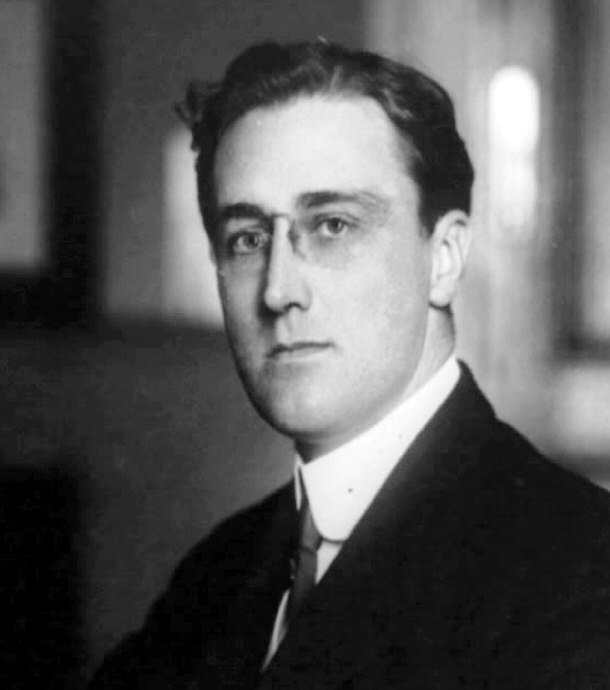
Therefore, the democratic party backed FDR's nomination, and he
campaigned for the senator seat. The strategy, along with a very strong
campaign, worked well. FDR won in a landslide, and his career in politics began.
9) Paralyzed due to Polio -- or was he?
Most people know that FDR was paralyzed after becoming afflicted with polio in
1921. He was traveling in Canada and got ill, and his doctors diagnosed him with
the disease. He didn’t let his disability stop him from working in politics. He
worked hard at trying to find a cure for his illness. He did learn how to use
braces and walk a short distance using a cane, mostly to keep up public
appearances for public office. He used a wheelchair privately, but worked hard
to not let it be known in public that he had a disability. He especially wanted
to keep it from the press, and only three photos that show FDR in a wheelchair
exist.
Roosevelt in Wheelchair due to Polio poliomyelitis

He was able to continue his career, and in 1928 he was elected governor of
New York. However, some modern researchers believe his illness was not polio,
but actually Guillain-Barre Syndrome, according to a study from the Journal of
Medical Biography. However, there would not have been any difference in the
treatment, so he still probably would have ended up paralyzed. The one benefit
to him having polio was that he brought so much public attention to it.
Young Child Afflicted with Polio
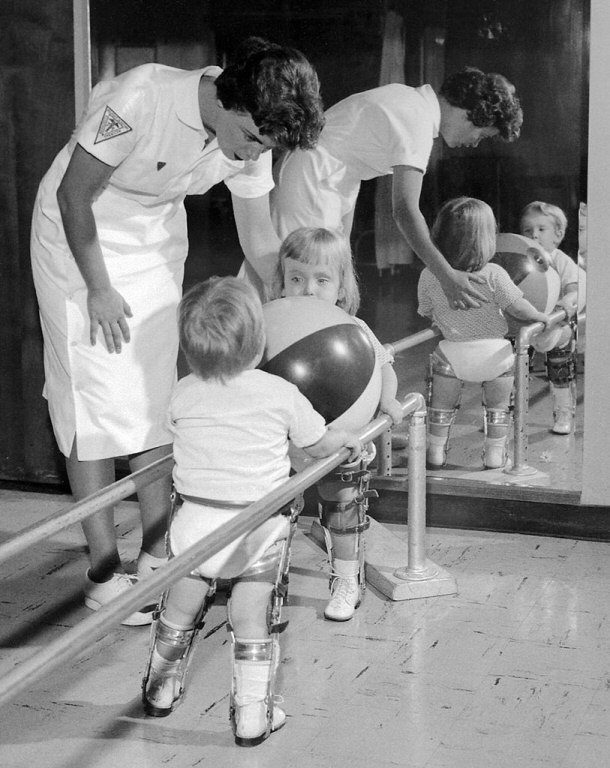
Thousands of lives have been saved since the eradication of Polio, and much
of the efforts for discovering vaccines can be thanked to the efforts of FDR
attempting to educate and get researchers interested in the disease.
8) First President to Speak on Television
Watching a president speak on television today is so typical that
most people do not even tune in when President Obama has a scheduled speech. In
fact, most people just get annoyed that their favorite TV show is pre-empted for
a presidential speech. However, in the early days television became a very
powerful tool for politics. Notoriously, Nixon lost to John F. Kennedy due to his poor
performance in the first televised presidential debate. FDR was the first
president to actually speak on television. His speech at the opening session of
the New York World's Fair was telecasted on April 30, 1938.
1938 World's Fair Opening Recorded on Television

Courtesy of edwardsamuels.com
However, the first
president to have broadcast from the White House itself was Harry Truman in
1947.
7) First President to Fly By Plane
Airplane travel only really began to take hold in the early 1900s.
Technically, Theodore Roosevelt was the first president to have flown in an
aircraft, although he was no longer in office. It was in 1910 in an early Wright
Flyer. During the 1900s, it was safer and much more efficient for a president to
travel by railroad than by air. In the 1930s, passenger air-travel became more
common, but it was not until in 1933 when FDR flew in an aircraft that a current
president had ever traveled by air. A special aircraft was designated for him, a
precursor to Air Force One. Although there is no evidence that FDR actually used
the craft, it remained for Presidential usage from 1933 to 1939. He did fly in
1943 to a conference in Morocco. Although FDR continued to have planes available
to him while in office, it was not until 1947, under Truman, that Air Force One
was officially indoctrinated as the official method of transportation for the
president.
Current Air Force One Presidential Aircraft
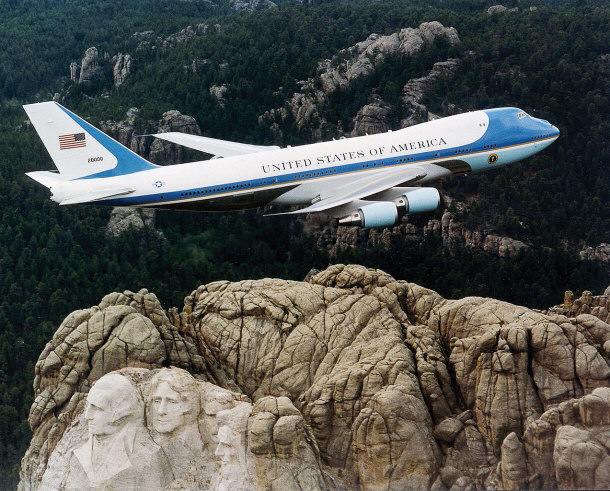
6) One of Only Eight Presidents to Die in Office
Out of the 44 presidents of the United States, only eight have died while
serving their presidential term. Most of the presidents who died while serving
were assassinated, although FDR was one of the few to die of natural causes.
FDR Funeral Procession

Lincoln and Kennedy were infamously assassinated. William Harrison, the ninth
president of the United States, died in 1841 from a very bad cold that turned
into pneumonia. He also had the shortest term, only 30 days. Many believed at
the time that he caught the cold during his inauguration speech, as there was
very cold and rainy weather during the day of his inauguration. Zachary Taylor,
the twelfth president of the U.S., died in 1850 after having some sort of
violent digestive ailment. The true cause of his illness was never determined. James Garfield was also assassinated, dying in
1881 after just four months as president. William
McKinley, the 25h president, in 1901 during his second term was also
assassinated. Warren G. Harding,
the 29th president, died under suspicion of poison, possibly by his own hand,
although his physicians pointed to congestive heart failure as the cause.
FDR Burial at Hyde Park, NY - Springwood Estate
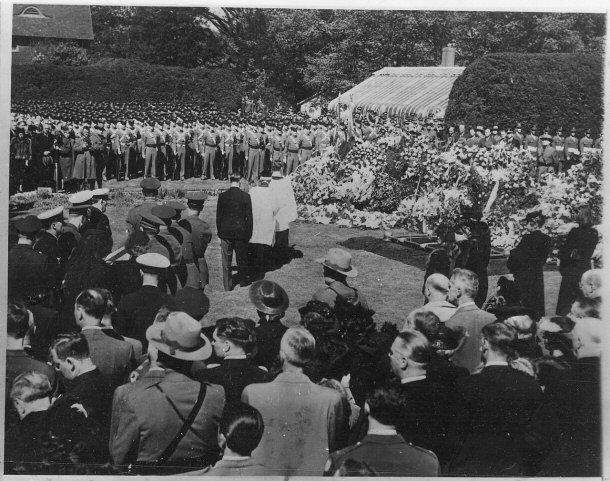
FDR
had a cerebral hemorrhage just a year into his fourth term, dying on April 12,
1945.
5) First President Whose Mother Could Vote for Him
A mother always wants to be on her son's side and will support him in all of his
endeavors. However, the mothers of the first 31 presidents of the United States
were unable to support their sons by voting for them in their respective
elections. Although women’s suffrage, the nineteenth amendment to the
constitution, was ratified on August 18, 1920, FDR was the first president whose
mother voted for him. It was not because none of the other mothers wanted to
vote for their sons. Nor was it some weird law that made it impossible for a
mother to vote for her son.
Sarah and Young Franklin Delano in 1887
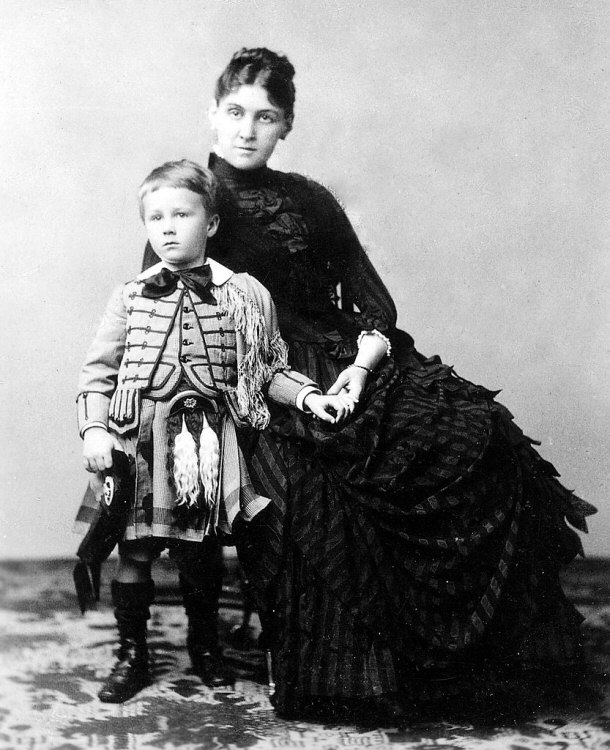
The reason it took a mother twelve years to support her son in her presidency
through voting is simple: Mrs. Roosevelt was still alive to see her son run for
office.
4) Was an Avid Stamp Collector
Everyone needs a hobby, and with FDR, he was an avid stamp collector. By the time he died,
he had over 1,000,000 stamps in his personal collection. FDR began collecting as a
child, and he continued throughout his life even while he was president. He fond
solace in stamps while ill with polio, and there was never a day in his life
that he did not spend with his collection. FDR said once, "I owe my life to my
hobbies - especially stamp collecting." Many photos exist depicting the
president taking a moment of solace in his stamps, relaxing and preparing for
the next meeting or responsibility he needed to meet as president.
FDR Pictured with his Stamp Collection
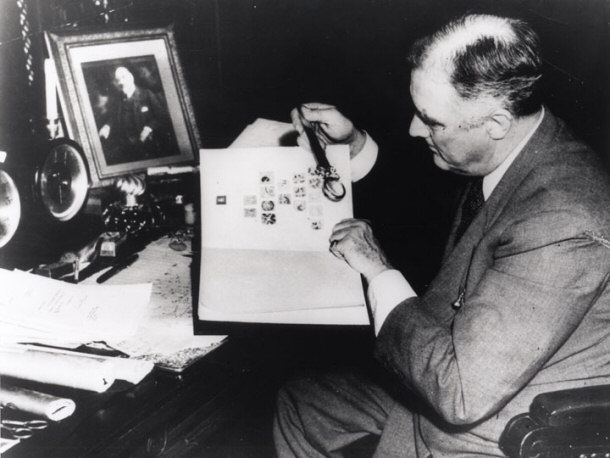
In fact, he
actually helped in the creation, design and promotion of over 200 stamps that
the post office created during his tenure as president. FDR actually sketched
ideas and creations and worked closely with the Postmaster General James A.
Farley. He believed that stamps meant more than just a means of sending a
letter.
Rare Stamp Misprint Depicting FDR with 6 Fingers
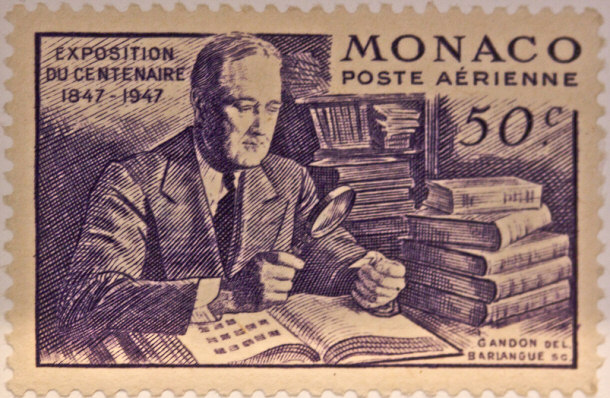
You can see more about his
hobby and his contributions to stamps during his administration
at the Smithsonian National Postal Museum.
3) Died While Having His Portrait Taken
In 1945, while on retreat in Warm Springs, GA, FDR had a cerebral hemorrhage
while having his portrait taken. Prior to his death, FDR had failing health that
many speculate had to do with complications from polio and the stress of holding
office so long; especially for the duration of a World War. He
went to Warm Springs, GA, where FDR had often retreated to in order to help
alleviate the pains he experienced due to polio.
Churchill, Roosevelt, and Stalin at Yalta Summit - Just 2
Months Before Roosevelt's Death
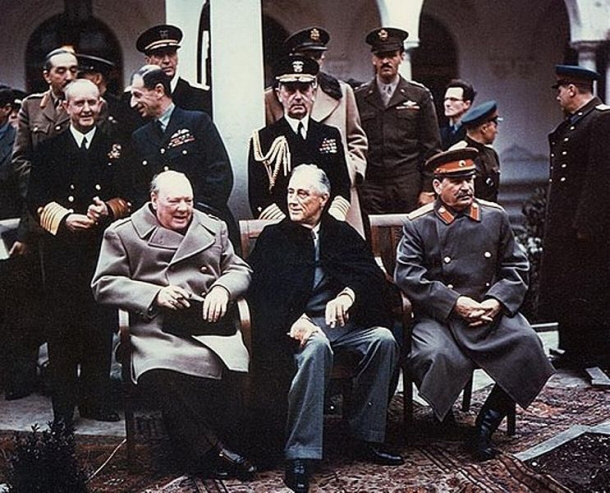
He wanted to
prepare for the founding conference at the United Nations. He was sitting for a
portrait painting by Elizabeth Shoumatoff when he said, "I have a terrific pain
in the back of my head," and then slumped down in his chair. He was quickly
carried into his bedroom and doctors arrived. His attending cardiologist said he
had a massive cerebral hemorrhage, also known as a stroke. Later that day, he
died. The portrait was never completed, and is famously known as the Unfinished
Portrait of FDR. Lucy Mercer Rutherford, his former mistress, was there with him
when he died, as was his daughter Anna Roosevelt Boettiger. Roosevelt was buried
in the Rose Garden at the Roosevelt family home in Hyde Park, the Springwood
estate per his wishes. His death greatly shocked the U.S. and the world. The
general public was unaware of his declining health, making his death that much
more of a shock. The world grieved his passing, and his vice president Harry
Truman took over the office.
2) Had the First Woman Cabinet Member
Women finally achieved the right to vote in 1920, but during the early 1900s it
was
still a difficult time for female rights and equality. Many universities still did not
educate women. However, that did not stop Frances Perkins, who became the first
woman cabinet member under FDR. She was his Secretary of Labor from 1933 to
1945. She helped the labor movement become a part of the New Deal Coalition. She
was also only one of two cabinet members to remain throughout FDR's entire
presidency. She helped establish many of the important aspects of the New Deal,
including laws against child labor, the first minimum wage and overtime laws,
assigned the forty-hour work week, a policy for working with labor unions,
established unemployment benefits, pensions for uncovered elderly, and welfare.
Frances Perkins in 1945
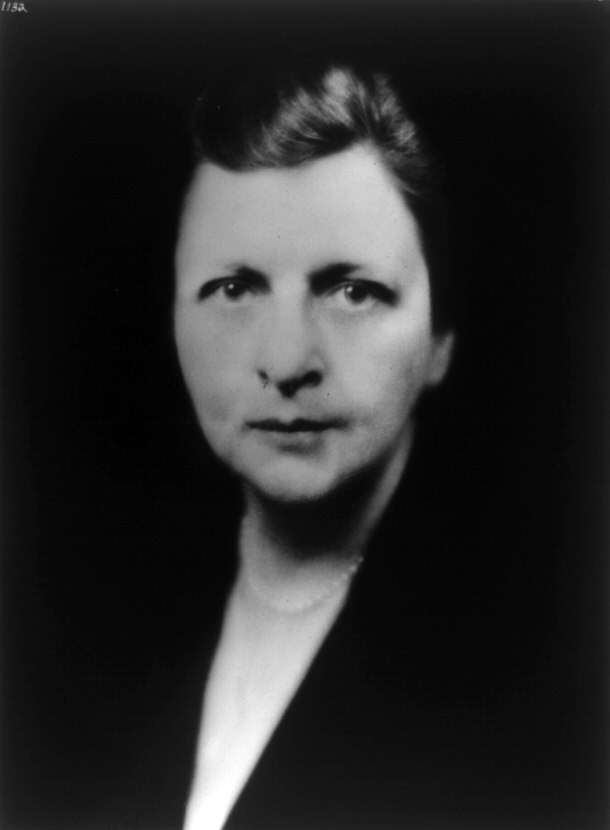
She also helped keep women out of the draft to help them enter the civilian
workforce. For a woman of her time to do all of this was just plain amazing. She
was very well educated, attending Mount Holyoke College for a BA in chemistry
and physics in 1890s, and got her master's degree in political science from
Columbia University in 1910. She met FDR while he was governor of New York, and
became his inaugural New York State Commissioner of Labor. Perkins was an
amazing woman who achieved so much, and it was thanks to FDR and his forward
thinking about women that she had the opportunity to accomplish what she did.
1) Had a Mistress
FDR may have done a lot for the country, but he was not perfect by any means. FDR had a
mistress he was in love with named Lucy Rutherford, who was in attendance at his
death and almost cost him his political career. Lucy was Eleanor's social
secretary and was hired in 1914. The affair between Roosevelt and Lucy began soon
after, especially with what many including J. Edgar Hoover believed to be an
estranged marriage contributing to the affair.
Lucy Rutherford
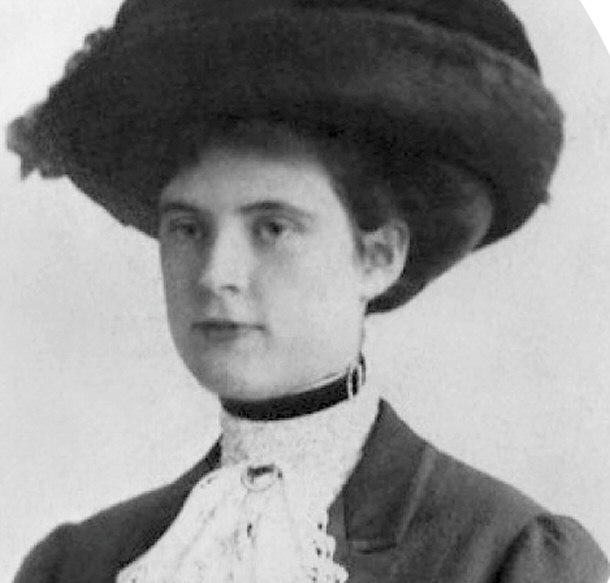
When Roosevelt returned from World War I in September of 1918, Eleanor
found many letters between Lucy and Roosevelt in his luggage. According to
stories, Eleanor offered to divorce FDR so that he could marry Lucy. However,
Lucy resisted marrying a divorced man with children for religious reasons
because she
was a Catholic. FDR broke it off with Lucy and promised never to see her again,
and Eleanor and FDR reconciled what was left of their marriage.
FDR in 1919
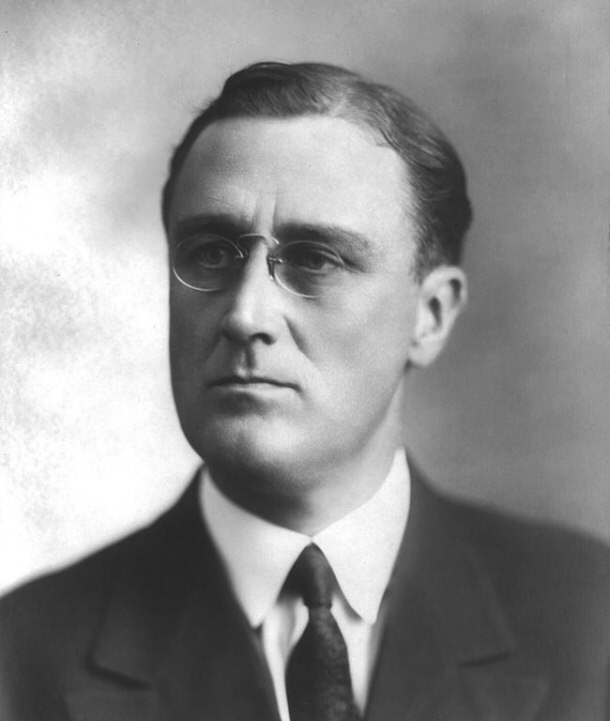
Roosevelt's mother also told him not to get a divorce
because it would cause him scandal and she would disown him. Although FDR
promised not to see Lucy, they maintained correspondence and even saw each other
again in 1941.
Eleanor Roosevelt in 1933
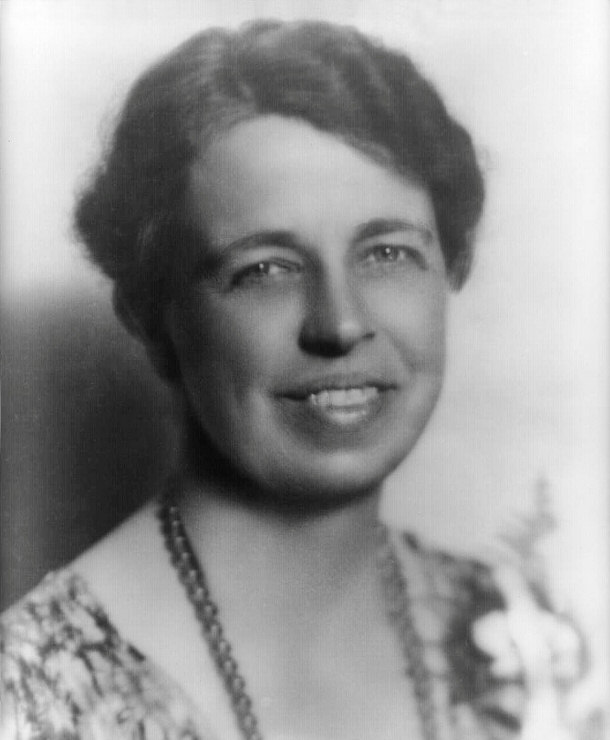
The secret service had a special name for her, Mrs. Johnson.
There are also stories that he may have had affairs with other women during his
life. Although they remained married and Eleanor also influenced aspects of his
presidency, the marriage suffered after the affair with Lucy. Eleanor lived in a
separate house in Hyde Park and worked harder in politics. Instead of a
marriage, they had a political partnership. When he first started to
become much more ill in 1942 and asked her to live at home again, she said no.
Allegedly, Eleanor was very distraught that Lucy was in attendance when he died.
However, Eleanor was buried next to FDR in the family plot when she died.
Final Words
Franklin Delano Roosevelt's presidency was during an extremely pivotal moment in
U.S. history. Between a major world war and a country in economic ruin, it took a
strong man to be able to strategically handle both of these crisis as well as
FDR did. FDR's
presidency left a legacy, and made him a household name. There are some of the
44 U.S. presidents who have been forgotten over the years, but with such an
amazing twelve years as president, it is extremely unlikely that FDR will ever
become lost in the annals of history. However, many facts about the man himself
are often forgotten that should be remembered. Just as FDR helped the poor get
jobs and regulate labor laws, he also had many firsts as a president. He was the
first to be on TV, the first to be on a plane, and the first to have a female
cabinet member. FDR was truly a president in a new age, bringing America into
the modern era of the twentieth century. A strong man who overcame illness and disability to lead a
nation through war, FDR will remain a historical figure to be studied and
respected by many generations to come.
Specific People
15 Things You Should Know About Stephen Hawking
15 Fascinating Facts about Michael Jackson
15 Fascinating Facts about Al Capone
15 Interesting Facts about Mother Teresa
15 Interesting Facts about Walt Disney
15 Interesting Facts about George Washington
15 Interesting Facts about Gandhi
15 Interesting Facts about Franklin Roosevelt
15 Interesting Facts about Ben Franklin
Top 15 Interesting Facts about Archimedes
15 Little Known Facts about Martin Luther King
15 Interesting Facts about Ronald Reagan
15 Interesting Facts about Nelson Mandela
15 Interesting Facts About Shakespeare
15 Interesting Facts about Marie Curie
15 Interesting Facts About Julius Caesar
15 Interesting Facts about Leonardo Da Vinci
15 Interesting Facts about Captain James Cook
15 Interesting Facts about John F. Kennedy
15 Interesting Facts About Cleopatra
15 Interesting Facts about Barack Obama
15 Interesting Facts About Albert Einstein
15 Interesting Facts about Adolf Hitler
15 Interesting Facts about Christopher Columbus
15 Interesting Facts About Bill Gates
People Related
15 Most Bizarre Things Purchased by Celebrities
Top 15 Reasons Why People Commit Suicide
25 Individuals Who Thrived with Savant Syndrome
20 Celebrities Who Invented Amazing Things
Top 15 Drugs People Commonly Overdose and Die From
Top 15 Myths about Death
15 Unusual Ways People Have Died
15 Crazy Festivities Around the World
55 Celebrities With Physical Imperfections
15 Funny and Unusual Ways Interviews Have Been Held
15 Weird Ways People Improve Their Confidence
15 Of the Darkest Crime Personalities We Hope to Never Meet
15 People Who Killed for a Living
15 Famous Celebrity Meltdowns
14 Fun Activities That Have Ended Up In Death
15 Facts & Info About Human Trafficking
Shorter Top Lists:
10 Billionaires as Wasteful or Fanciful as They are Wealthy
10 Ruthless Serial Killers Who Were Never Caught
10 Dangerous Serial Killers
Informational:
Detecting Lies: How to Tell Whether or Not Some is Truthful
Cannibalism in History and the Modern World
What Your Favorite Color Reveals About You
What is a Weirdo? Defining Weirdness in Society
Media's Effect on Society
How to Attract Beautiful Women |